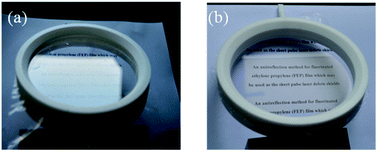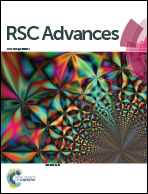An antireflection method for a fluorinated ethylene propylene (FEP) film as short pulse laser debris shields
Abstract
Debris mitigation is a major challenge for all high peak power laser system. Thus, fabrication of special polymer films to protect from target debris is significant. Fluoride polymers, representative of fluorinated ethylene propylene (FEP), have excellent ultraviolet-visible transmission, laser-induced damage thresholds and mechanical properties, and stand a good chance to be used as debris shields. However, the transmittance of FEP is still lower than that of fused silica glass and needs to be improved before it is really used in the laser field. The difficulty is that modifying on inactive fluoride polymers is very difficult. In this study, we developed a simple method to create large-scale porous silica antireflection layers on inactive FEP film. The method combines oxygen plasma processing and the sol–gel process, and the maximum transmittance of the coated FEP film reaches 99.28% as compared to 96.83% for the uncoated FEP film. Aiming at the wavelength of 351 nm, the transmittance of the coated FEP film reaches 97.48% compared to 93.42% for the uncoated FEP film. This antireflection FEP film has considerable applications in the high peak power laser field.


 Please wait while we load your content...
Please wait while we load your content...